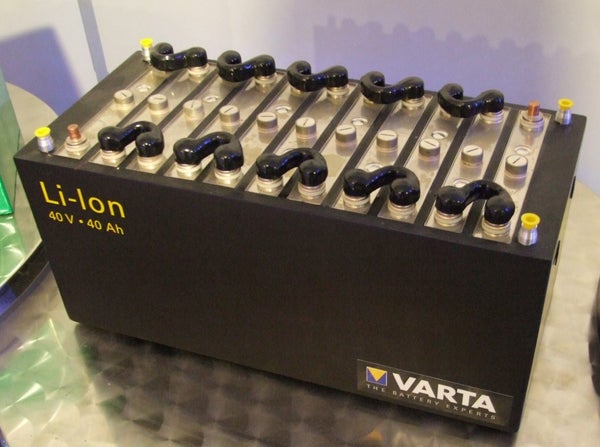This article was published in Scientific American’s former blog network and reflects the views of the author, not necessarily those of Scientific American
A new recycling process could provide a way to restore lithium-ion battery cathodes to “mint condition”. What’s better, this new process only uses half the energy of conventional recycling methods.
The new process centers on a non-destructive approach to recycling cathode materials. In the recycling methods that are typically used today, cathodes are broken into their separate elements. This new method would preserve the cathode material. According to the University of California, San Diego Professor Zheng Chen, who co-authored a new paper documenting this new approach to recycling batteries:
“The [cathode] material is in the form of beautiful, well-designed particles with a specific microscopic structure that determines the performance of the battery…A lot of engineering, energy, and time go into making these structures.”
On supporting science journalism
If you're enjoying this article, consider supporting our award-winning journalism by subscribing. By purchasing a subscription you are helping to ensure the future of impactful stories about the discoveries and ideas shaping our world today.
This is why Chen and his colleagues (Yang Shi and Gen Chen, of UCSD and UCLA, respectively) worked to develop a way to recycle this battery material while still preserving the cathode’s microstructure --- in other words, preserving all of the engineering, energy and time that went into making the cathode in the first place.
Their method involves taking degraded cathode material from used batteries and soaking it in a hot lithium salt bath. The solution is then dried and quickly heated up to 800 degrees Celsius (1572 F). After cooling the material, the researchers are able to re-inject lithium ions into the cathode material and create new batteries.
According to their paper, which was recently published in the journal Green Chemistry, the new material is good-as-new.
In other words, battery cells made with their recycled cathode material had the same energy storage capacity, charging time, and lifetime as new batteries.
The team is continuing to work on the process and talking to industry about how this new way to recycle batteries can be adopted outside of the lab.
